The Genius of LIKEtoKNOW.it
Published on
August 16, 2016
By Kari
Digital Project Manager
Last month was monumental for Instagram. It surpassed 500 million monthly users and gained more than 100 million users in the past nine months alone. And there is no social media platform as essential to a fashion blogger as Instagram. It’s perfect for sharing the classic “outfit of the day” (#OOTD) and other fashion-related posts because it is an image-based social platform. However, because Instagram does not allow the use of links in posts, fashion bloggers have long struggled with how to monetize their Instagram posts.


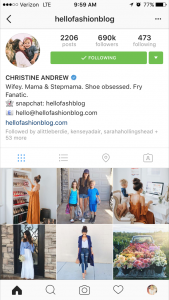
Then came LIKEtoKNOW.it.
Here’s a little background: In 2011, rewardStyle was born, a fashion technology company that allows fashion bloggers to easily monetize their blog. Prior to becoming the president and co-founder of rewardStyle, Amber Venz Box was looking for a way to monetize her blog after noticing that by sharing all of her styling tips and secrets on her blog, she was cutting herself out of her personal shopping business. She researched what other bloggers were doing to make money and ended up joining eight ad networks. But Box soon realized there was a need to simplify the process and create a centralized reporting system with all of the advertisers in one place. She then teamed up with a technology company, NastyGoat, to form rewardStyle. In addition to creating tools to monetize blogs, the company went on to create LIKEtoKNOW.it in 2014, which allows bloggers to monetize their Instagram posts.
Here’s how LIKEtoKNOW.it works:
- The consumer registers with LIKEtoKNOW.it using their Instagram account.
- The consumer likes an Instagram post of a content creator who has a LIKEtoKNOW.it profile. (Note: There is an extensive application process to be able to use LIKEtoKNOW.it in your posts, so not every blogger is able to use the technology.)
- Within a couple of minutes, the consumer receives an email with all of the shoppable items in the post they just liked. These items are curated by the content creator and are linked to a brand’s or store’s website for where to buy the items.

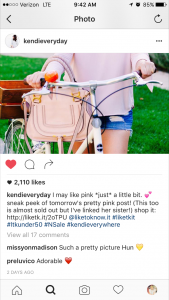
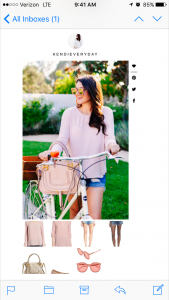
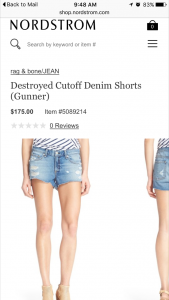
It’s pretty simple to use and a win-win-win for the consumer, content creator and brand. The consumer gets the inside scoop on desirable products (clothes, accessories, home décor, etc.). The content creator (plus rewardStyle) gets a commission fee whenever a link from the LIKEtoKNOW.it email is converted to a sale on a brand’s or store’s website. And the brand benefits from the organic endorsement of its product by top content creators.
According to Box, “Retailers should look at LIKEtoKNOW.it as content marketing with a retargeting element. Users have specifically identified an interest in the products shown and requested to receive follow-up information about those products.”
Today, more than 9,000 influencers (bloggers/content creators) leverage rewardStyle’s technology, and the company itself has earned $100 million in sales from retail partners. There are 1,000 original pieces of content published daily, and 6 million triggered “MyLikes” emails are sent monthly. On top of that, 75% of the consumers are between the ages of 18 and 35 (AKA Millennials), so this is a huge “in” for brands trying to target Millennials.
Almost two years ago, I wrote another post about the importance of brands utilizing bloggers to sell their products because of the trust and influence these bloggers have with their followers. In the last two years, I would say the use of content creators has never been more important for brands, especially if they are trying to target Millennials.
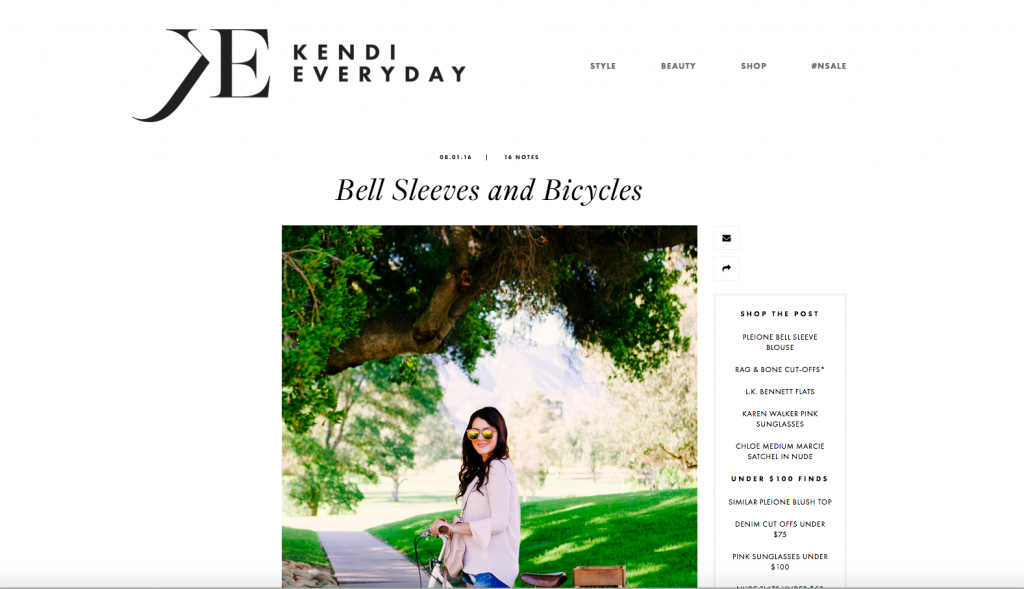
In case you still aren’t convinced of the power of influencers, here are some eye-opening stats. Millennials are 44% more likely to trust experts (who happen to be strangers) and 247% more likely to be influenced by blogs or social networking sites (HubSpot). Advertisers earned $10.48 for every $1 spent on paid media from influencer marketing programs in the retail and apparel category (eMarketer). And in a recent survey, 60% of people said they have been influenced by a blog or social post when shopping vs. the 3% who said they would consider buying a celebrity-endorsed item (ConsumerAffairs).
As a female Millennial in my mid-twenties, I read a lot of blogs and use LIKEtoKNOW.it daily. Most of my friends are subscribers to LIKEtoKNOW.it as well. I would say I am more likely to buy something I have seen a blogger wearing or using because I value the opinions of the influencers I follow. So though I am not an “expert” in the area, I am in the middle of the target market, and because of that, I think influencer marketing is likely going to continue to grow, especially with my age demographic. Millennials, myself included, trust these influencers more than traditional advertising, and LIKEtoKNOW.it is one of the innovative tools that allows brands to break through and effectively reach me without my feeling bombarded by ads. LIKEtoKNOW.it has made it easier for bloggers to monetize their posts, brands to reach consumers in an organic way, and consumers (like me) to know about the products influencers are using.
TL;DR
Resources
LIKEtoKNOW.it
LIKEtoKNOW.itrewardStyle
rewardStyleThe Click Clique
Texas MonthlyLike to Know It: Monetizing Personal Shopping on Instagram
Harvard Business School Open KnowledgeCareer Profiles: Amber Venz of rewardStyle
The EverygirlInfluencer Marketing: All It’s Cracked Up to Be?
eMarketerInstagram Now Has More Than 500 Million Monthly Users as Explosive Growth Continues.
AdWeekLIKEtoKNOW.it Turns Instagram Content Into Revenue
Retail TouchPointsSurvey: Bloggers Now Have a Bigger Influence Than Celebrities
ConsumerAffairs8 Modern Tips for Marketing to Millennials
HubSpot